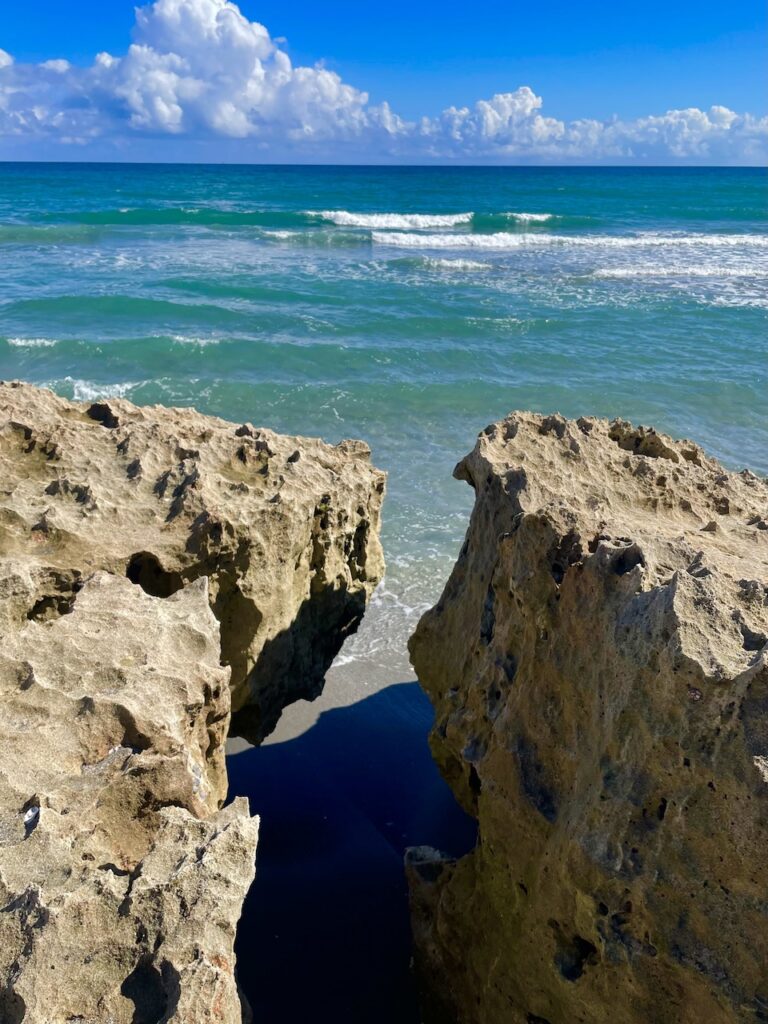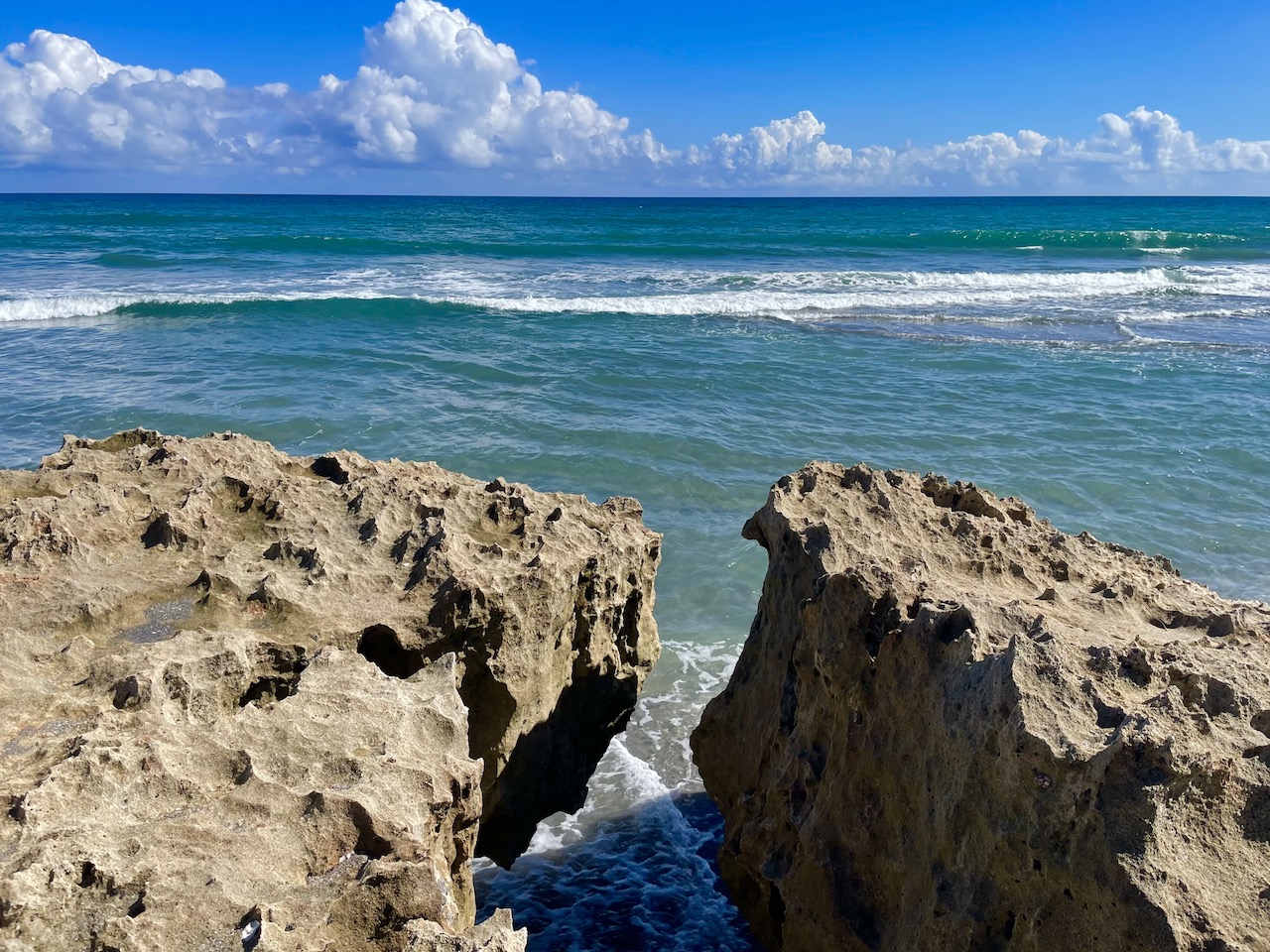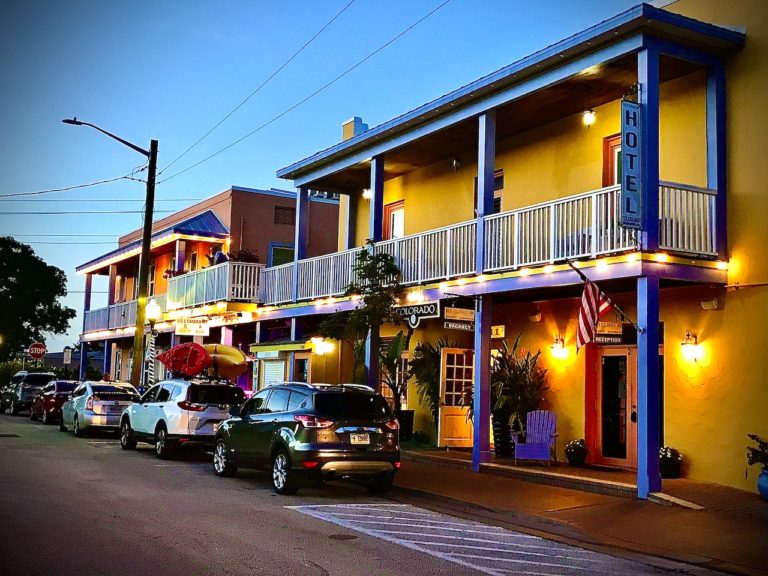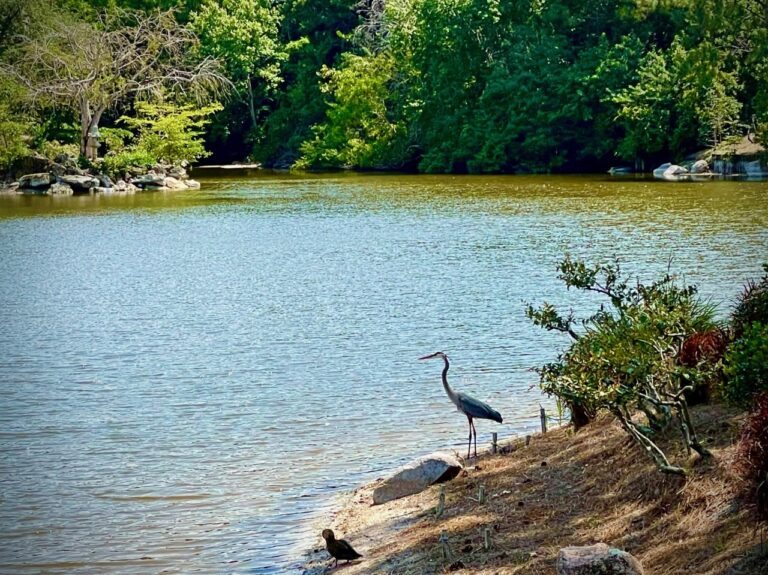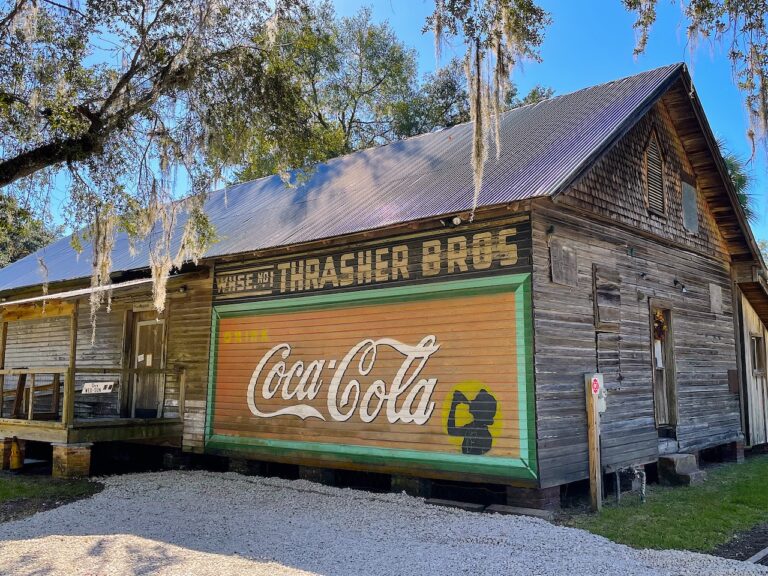Although it’s easy to miss it, if you travel just North of Jupiter, Florida on South Beach Road you will find an environmental preserve on Jupiter Island known as Blowing Rocks. This preserve contains the largest Anastasia limestone formations on Florida’s East Coast. It is the longest stretch of rocky shoreline in Florida. When the tide is low, you can walk beneath the rocks exploring the caves for sea life and shells. But when the weather gets rough and the seas get angry, Blowing Rocks Preserve is breathtaking.

If you visit at high tide when the sea is rough, waves spray water through the rock’s erosion holes. The water can shoot up and reach heights of 50 feet.
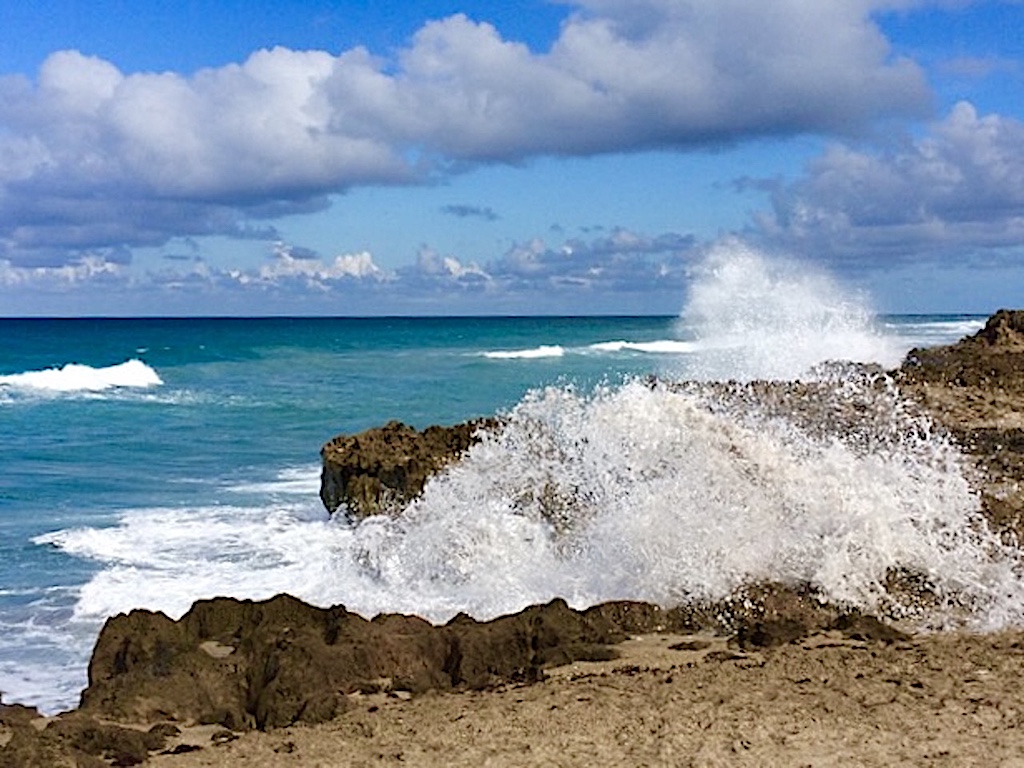
We arrived at the preserve late morning and while the waves were not crashing like they would be at high tide, the views were phenomenal. The views reminded me of the rocky coastline of Acadia National Park.
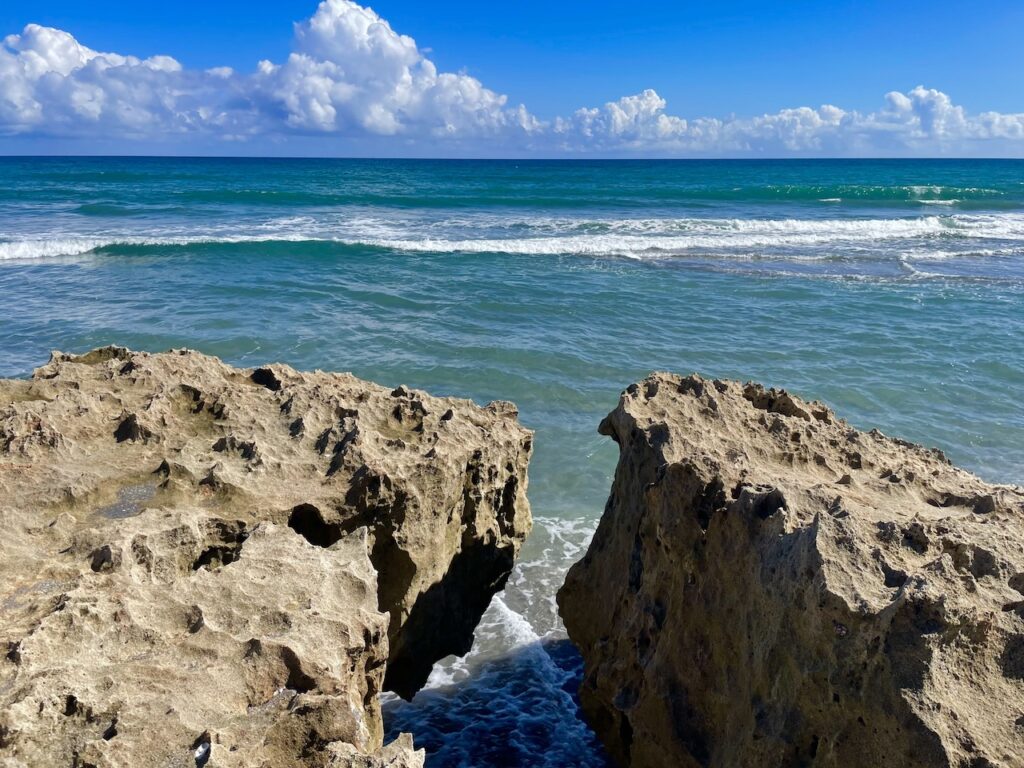
The Nature Conservancy
The preserve is protected and managed by The Nature Conservancy and encompasses 73 acres of reclaimed coastal habitat. The mission of the conservancy is to conserve the lands and water and in addition, to ensure that future generations can experience a fast-disappearing type of Florida ecosystem.

Anastasia Limestone (Coquina)
Coquina rock is made of what remains of ancient coral reefs, sand, and shells. Because of its strength, it has been used as a building material for hundreds of years. The Spanish built Castillo de San Marcos in St. Augustine out of the rock in 1672. Blowing Rocks is the largest Anastasia limestone shoreline on the Atlantic coast of the U.S.
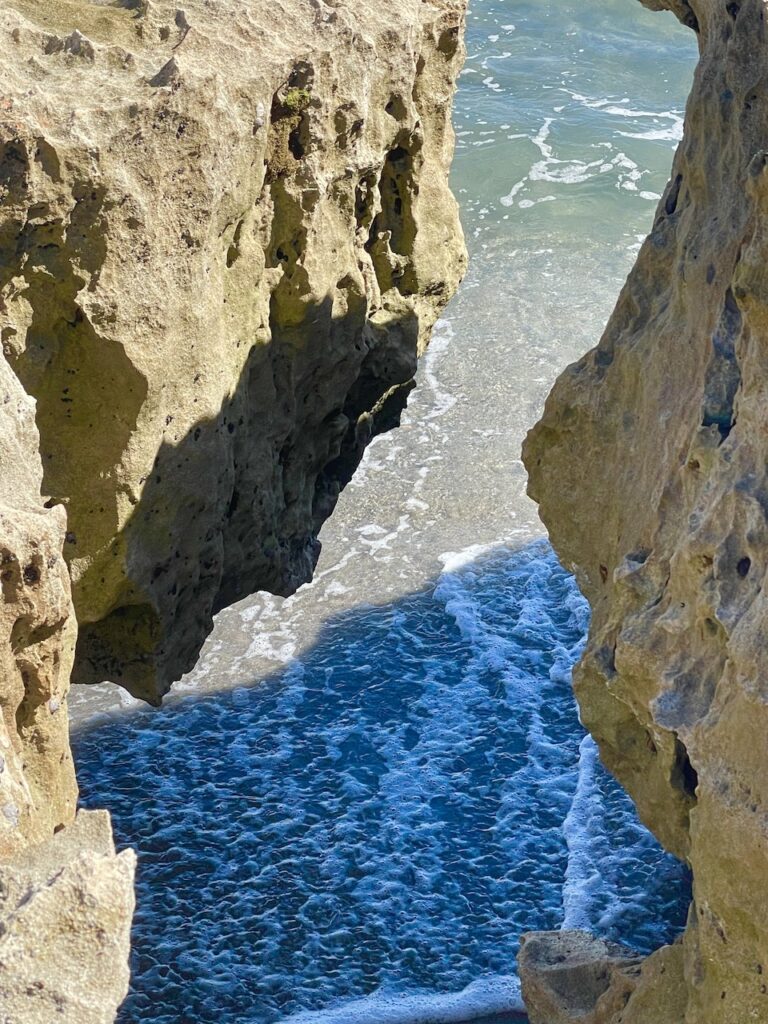
Take a Walk on the Beach
To see the rock formations and explore the caves, you will want to arrive at low tide. This will keep you safe from the danger of the waves crashing against the rocks. It was also amazing to stand on the rocks and look out onto the Atlantic Ocean as far as you can see. We were able to sit on the edge of the rocks, enjoying the peacefulness of the waves coming ashore.

After viewing the ocean from the large rocks, we walked along the beach to enjoy the calmness of the ocean. The water was a beautiful shade of blue-green. We especially enjoyed watching the playful birds and picking up a few shells that we found on the shore.
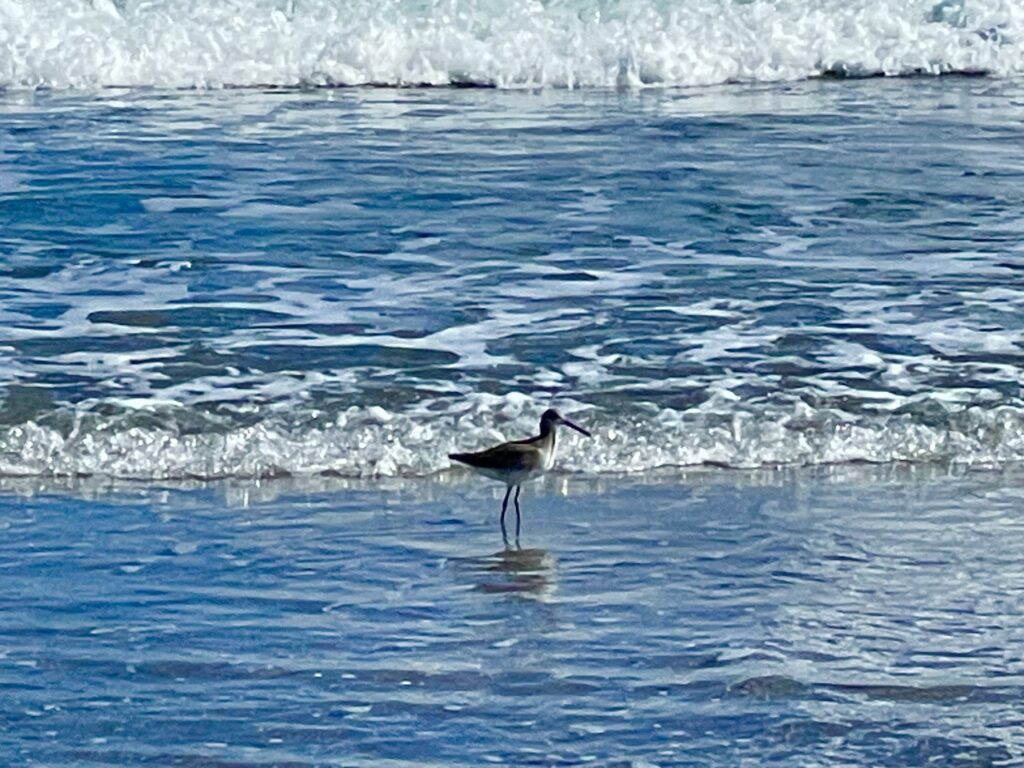
NOTE: The rocks are jagged and very sharp so wear a pair of good water shoes or tennis shoes. Even those Florida flip-flops won’t do it because they get wet and slippery.
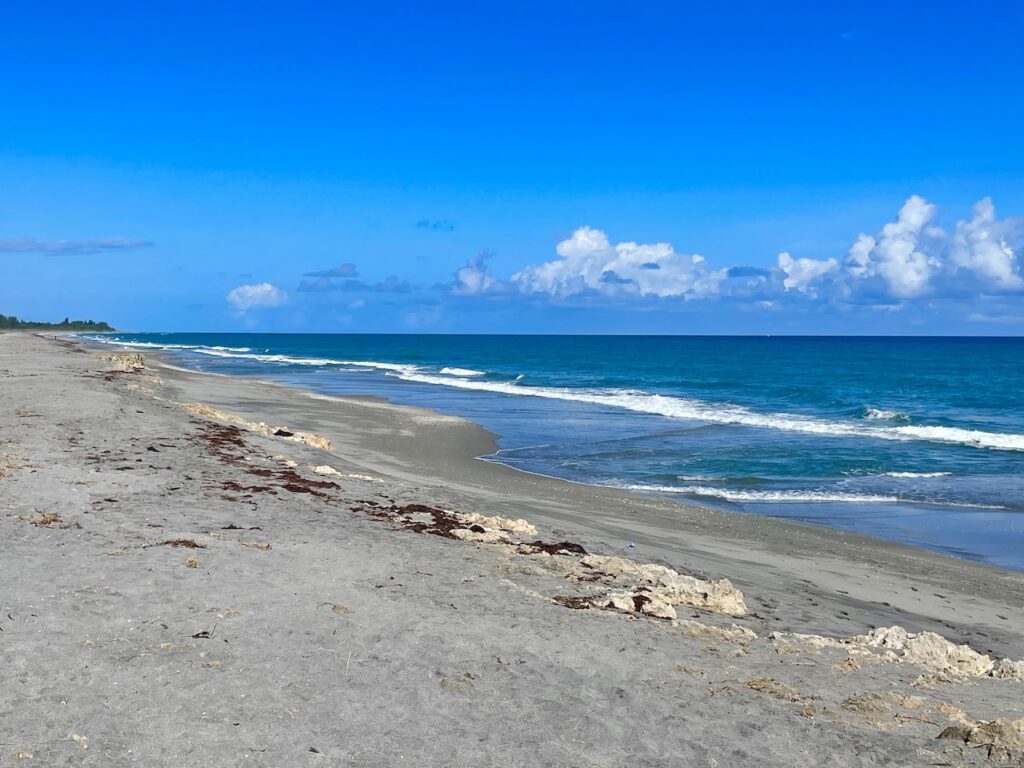
Sea Turtle Nesting
The preserve is also a nesting area for Loggerhead, Green, and Leatherback turtles from March- October each year. More than 600 female sea turtles lay their eggs on the quiet, dark beach. Lights from developed areas discourage females from nesting, making it critical to maintain dark, protected areas like this along the coastline. Walking along the beach, you may notice the small roped-off areas. These indicate the locations of sea turtle nests flagged by volunteers.
Tunnels and Trails
As you walk The Beach Trail from the parking lot to the beach, you will pass through a tunnel of sea grapes that form natural canopies big enough to walk through. The filtered sunlight dances as you move through the leaves. Not only is it calming walking through the canopy but in the distance, you can hear the sound of the ocean as the waves roll in along the shore. As you explore, you may observe rare birds, plants, and animals.

Besides the Beach Trail, the popular Dune Trail leads you through a sea grape tunnel and offers stunning views of the beach dune habitat and the Atlantic Ocean.
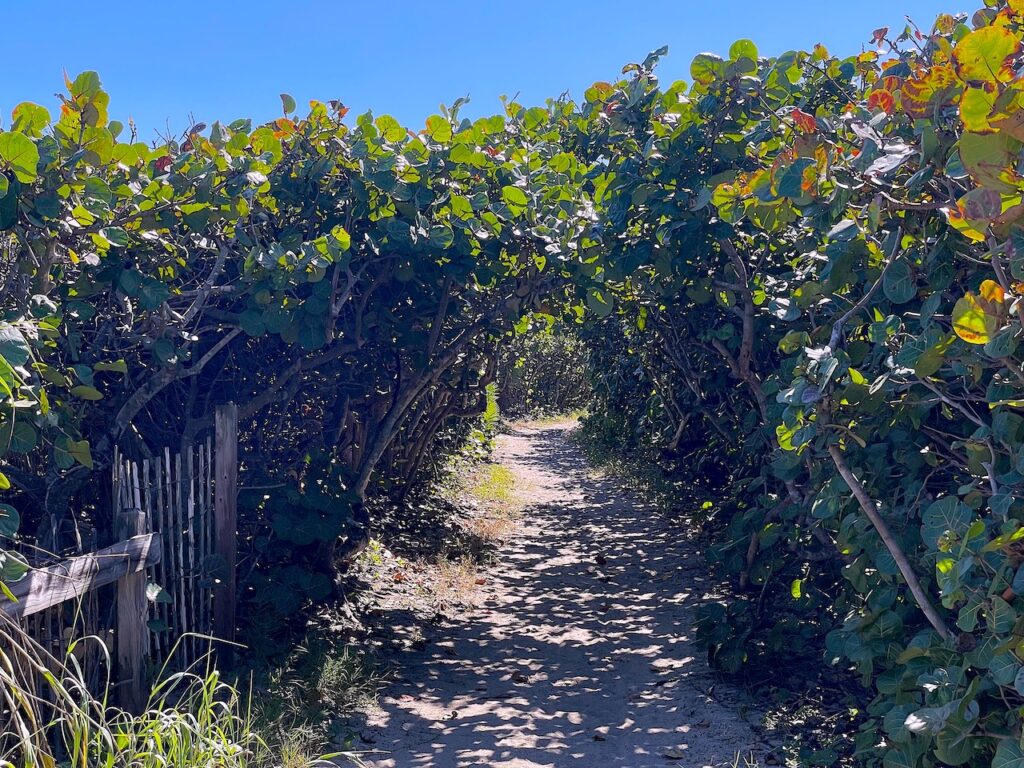
When you get to the shore, you have the option of taking the steps to the beach or continuing on The Dune Walk which promises some beautiful beach views.
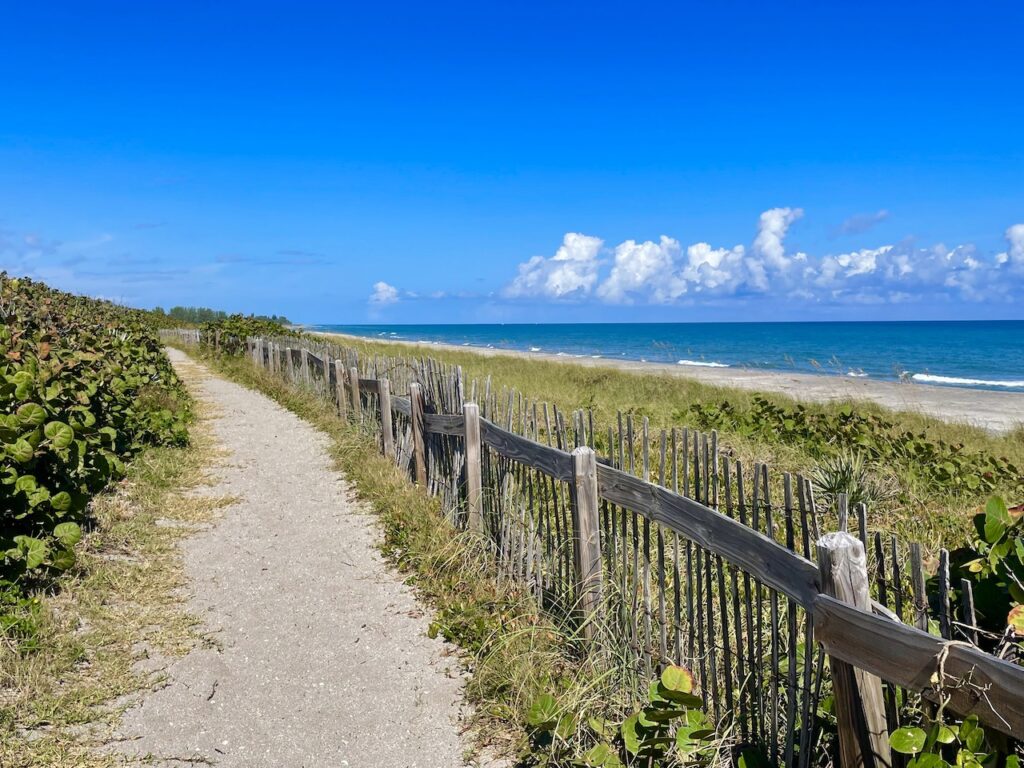
Across the street is a Mangrove Boardwalk, which is 300 feet of elevated boardwalk through a mangrove ecosystem that includes an overlook of the Indian River Lagoon. Mangroves help protect shorelines from erosion caused by wave energy and storms. They also provide sheltered nursery areas for fish and shellfish.
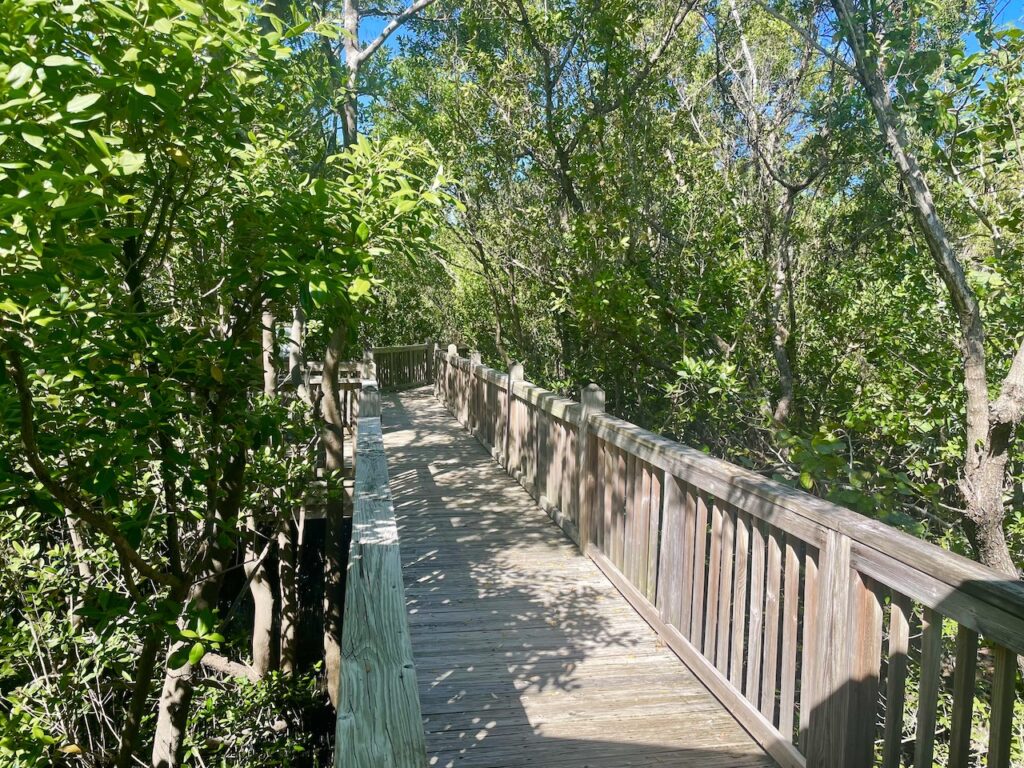
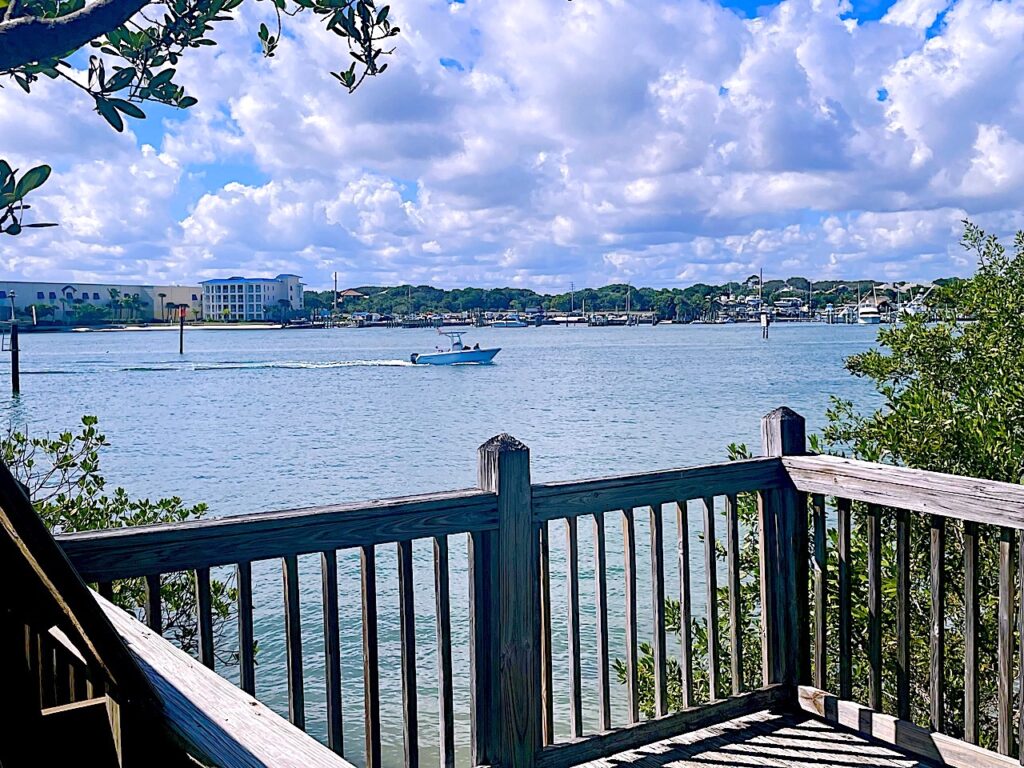
Following the short hike on the boardwalk, we found the Lagoon Trail which features a short loop trail through saltwater marsh and coastal strand habitat. As you walk the trails, you’ll see over 250 native plant species like subtropical hardwoods, three types of mangroves, gumbo limbo, wild coffee, Jamacia caper, and sea oats. Volunteers spent hundreds of hours removing invasive species along this trail that leads to the Indian River Lagoon. If you would like to help, you can spend a morning collecting non-native seeds and weeding this important habitat. Check out volunteer opportunities here.

Hawley Education Center
Across the street from the beach, you can visit the Hawley Education Center. Built in 1996, it has exhibits on the area’s history and native species. Not only do they have restrooms here but air conditioning! The preserve also offers events for those who are interested in learning more about these endangered habitats.
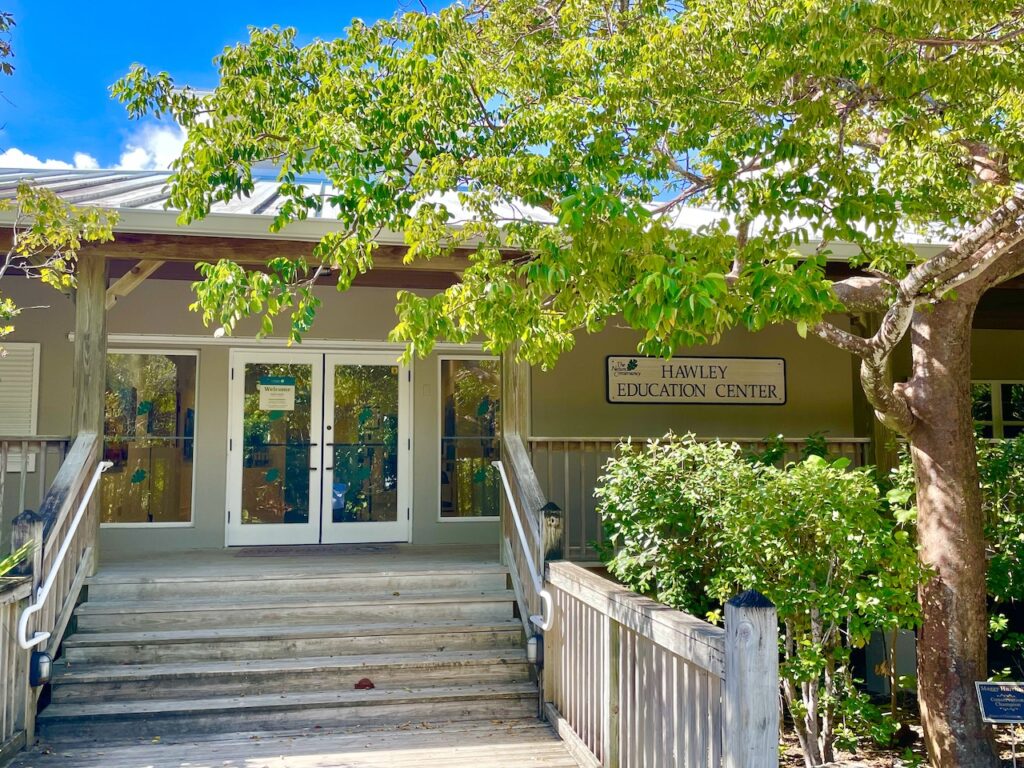
Planning A Visit
If you are planning a visit, note that Blowing Rocks is open from 9:00 a.m. to 4:30 p.m. seven days a week, except Easter Sunday, Thanksgiving Day, Christmas Eve, and Christmas Day. Free Parking at the preserve. An optional $2 per person donation helps to maintain this coastal preserve for people and wildlife.
